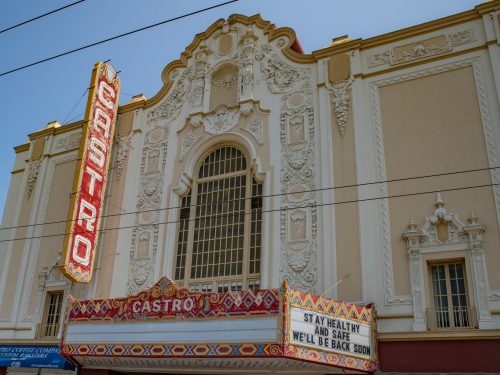 7 Things To Do When Visiting the Castro, San Francisco
7 Things To Do When Visiting the Castro, San Francisco
Among the many neighborhoods in San Francisco, the Castro is one of the most famous. You’ll find it in Eureka Valley, overlooked by…
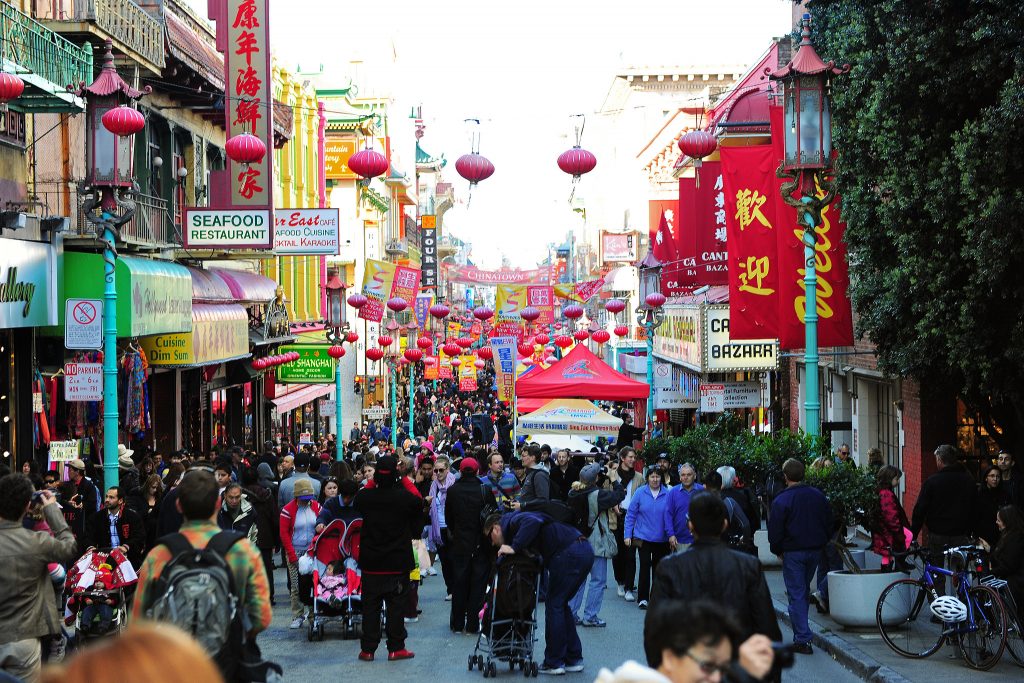
San Francisco’s Chinatown is one of the city’s most quintessential attractions — a neighborhood filled with unique architecture, delicious dim sum joints, and shops specializing in everything from herbal remedies to exotic teas, not to mention plenty of history. And it’s all right in the heart of SF.
From secret alleyways to subterranean jazz shows, there’s a bit of something for everyone in this downtown hub. As a local, I’m here to show you what you can’t miss in this neighborhood guide to SF’s Chinatown.
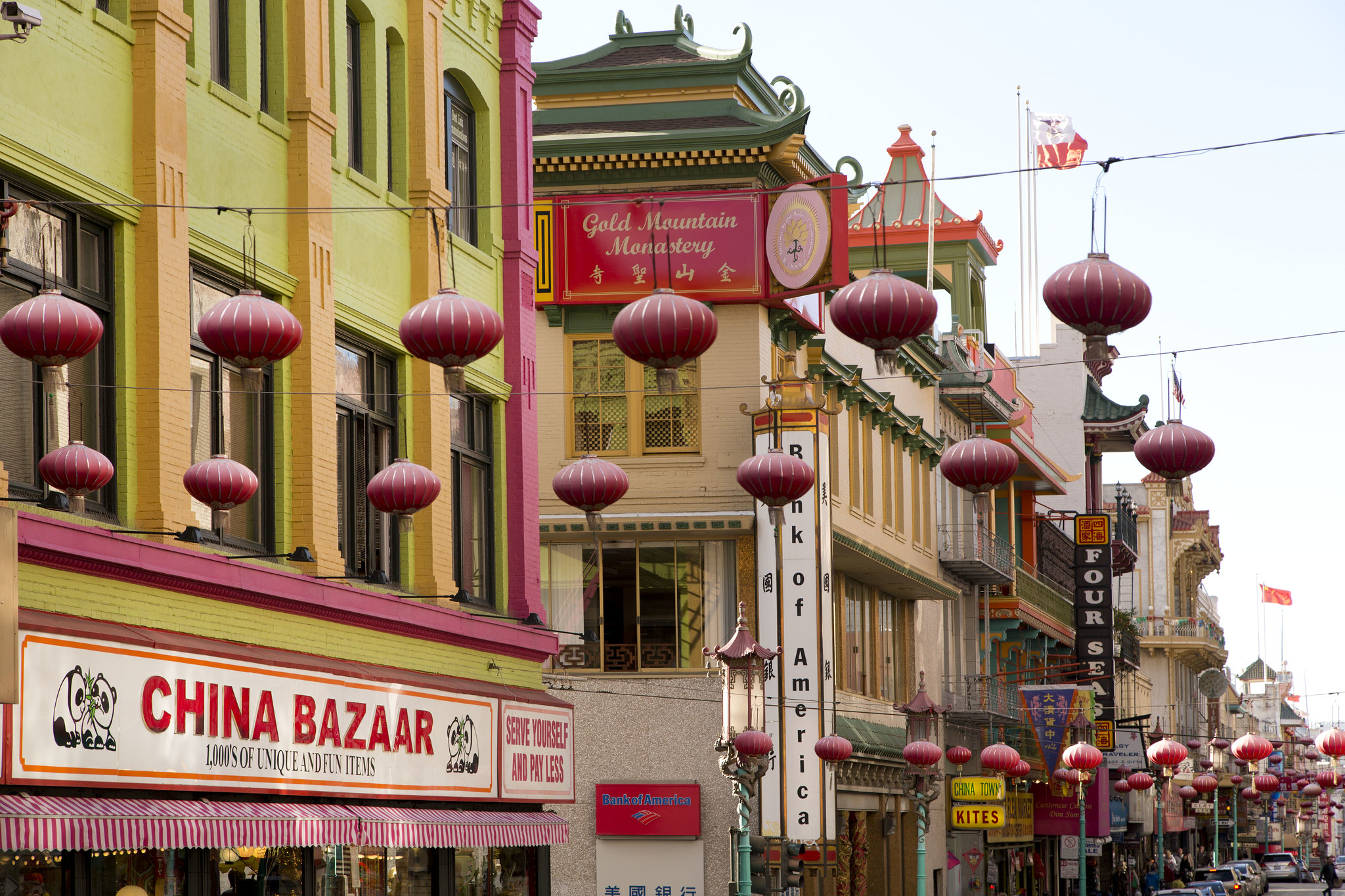
Chinese immigrants first came to San Francisco in the mid-19th century, establishing what’s known as North America’s oldest Chinatown in 1848. The neighborhood developed right alongside the Gold Rush.
Initially, San Francisco was the port of entry for those coming to work in the gold mines, but soon Chinese merchants began setting up shop in what’s now known as Chinatown — one of the few places they were allowed to settle.
As the years progressed, more and more Chinese immigrants (originally from regions in and around the country’s Guangdong Province) continued arriving in search of economic opportunities, finding employment in the local garment factories, as farm laborers, and in constructing the Central Central Pacific and Transcontinental railroads.
Although San Francisco’s 1906 earthquake and fire destroyed the bulk of Chinatown’s homes and businesses, its residents rebuilt bigger and better. This is when the architectural style that exists today was born. That’s because Chinese-American businessman Look Tin Eli, who managed the neighborhood’s Sing Chong bazaar, convinced other local Chinese merchants to hire American architects to rebuild Chinatown in an “Oriental” style that would attract tourists — one with pagoda rooftops, curved eaves, and ornamental ironwork, including dragon motifs.
Today, San Francisco’s Chinatown is home to tens of thousands of residents, the majority of which are Chinese. They live within 24 city blocks chock-full of herb shops, tea stores, and eateries, where tourism is not only a part of daily living, but one that’s essential to it.
There’s so much to do in Chinatown, but if you want to hit the highlights, here’s what you can’t miss.
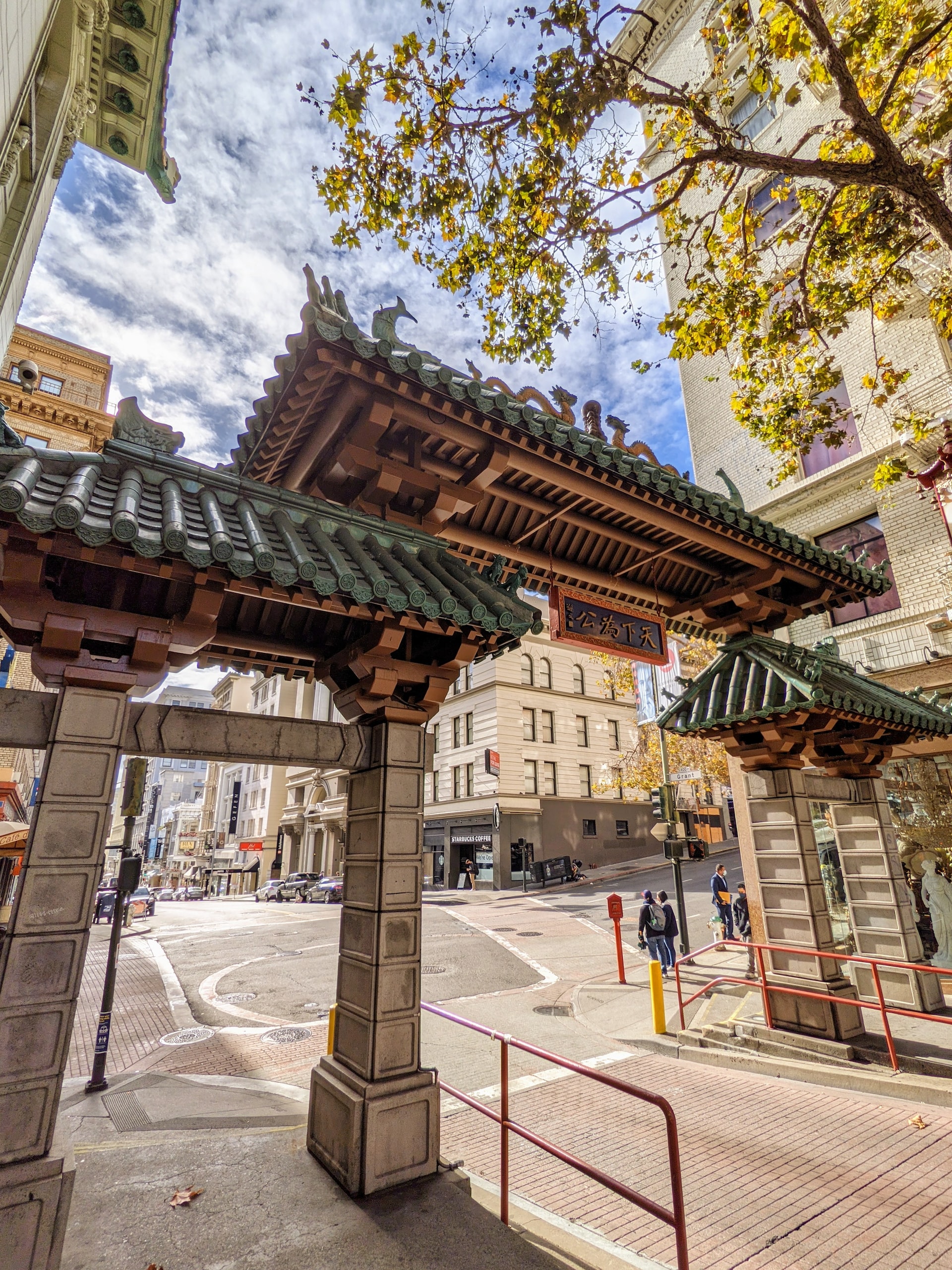
Bustling Grant Avenue is the neighborhood’s main hub, one adorned with red lanterns strewn above the street and recognizable by its Dragon Gate, a south-facing gate that’s built in the style of a traditional Chinese pailou (a type of architectural arch) and stands at the intersection of Grant and Bush streets at the Union Square entry to Chinatown.
Along with acupuncture clinics and shops like Fong Seng Co, which stocks everything from candied baby scallops to Chinese medicines, Grant Avenue is home to both the Sing Chong and Sing Fat buildings, two multi-tiered pagoda-topped structures that are prime examples of post-1906 Chinatown architecture. They’re also a favorite among photographers.
Local tip: Shop for ceramic maneki-nekos, lucky cats that are meant to bring good luck, along with silk scarves and beaded purses at Grant Avenue’s Canton Bazaar, or wind wheels, airfoils, and box kites at the long-running Chinatown Kite Shop.
One block east of Grant Avenue is Portsmouth Square, the heart of Chinatown. It’s easily recognizable by the local residents practicing tai chi and playing mahjong, a tile-based game similar to the card game rummy.
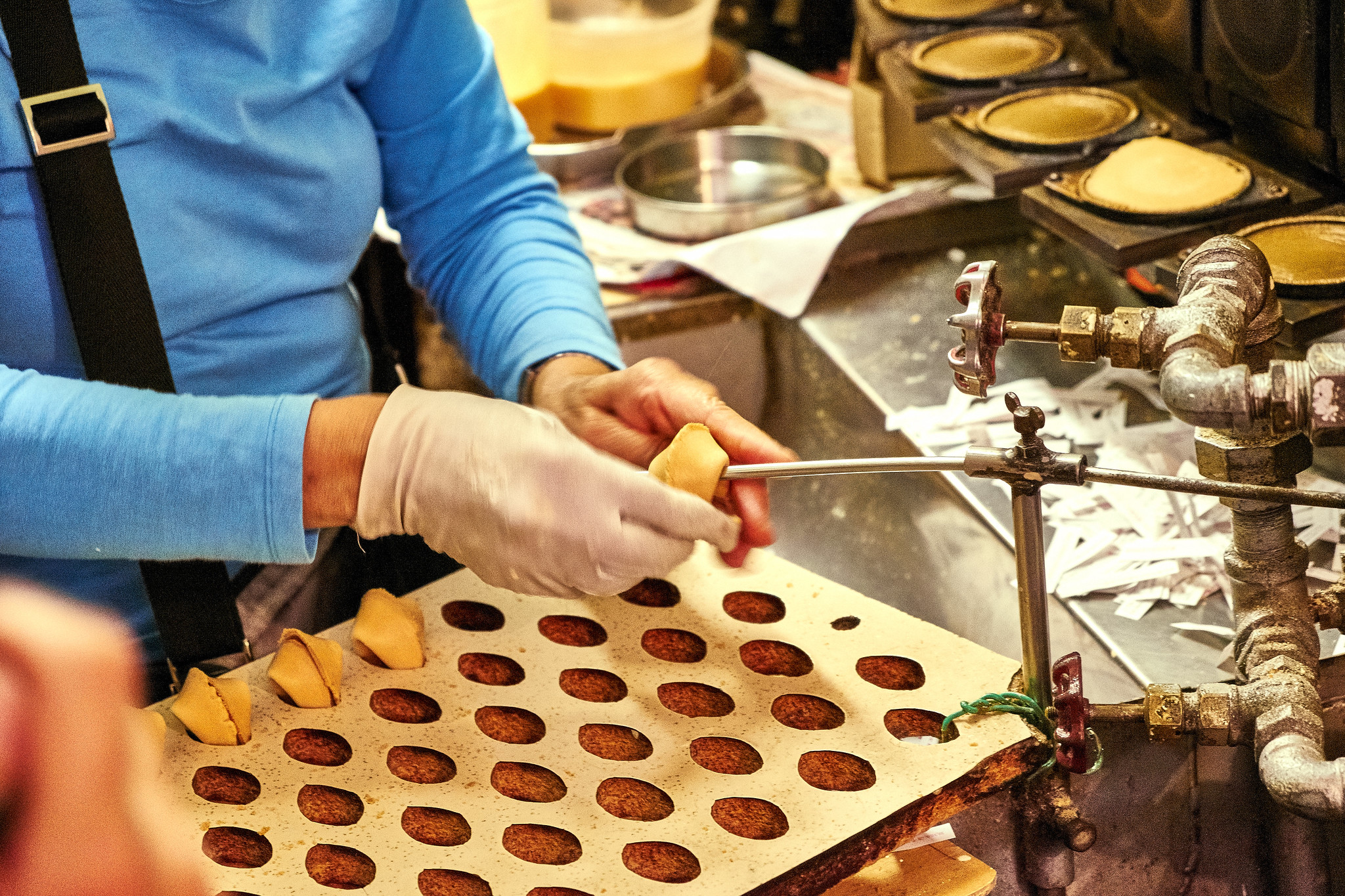
Chinatown is known for its alleyways, out-of-the-way stretches with names like Waverly, Stark, Beckett, and Ross where you find unique treasures such as the Clarion Performing Arts Center. This nonprofit venue hosts events ranging from concerts by jazz trios to paper art exhibits, and features a Saturday museum that pays tribute to Chinatown’s 1950s and ’60s nightclub scene with a collection of headdresses, costumes, and other enchanting artifacts.
Another alleyway find is the Tin How Temple. Not only is it the neighborhood’s oldest surviving Taoist temple (this 1850s temple survived the 1906 earthquake), but Tin How is also one of the oldest still-operating Chinese temples in the entire country. It’s dedicated to the Chinese sea goddess Mazu (known as Tin How, “Empress of the Heavens,” in Cantonese), and while the temple remains active, visitors are welcome to visit the third-story walk-up space, light incense, and purchase praying cards.
One of the coolest things to do is pay a visit to Ross Alley’s Golden Gate Fortune Cookie Company, where they make these clairvoyant creations right before your eyes. You can even make your own on our guided San Francisco walking tour.
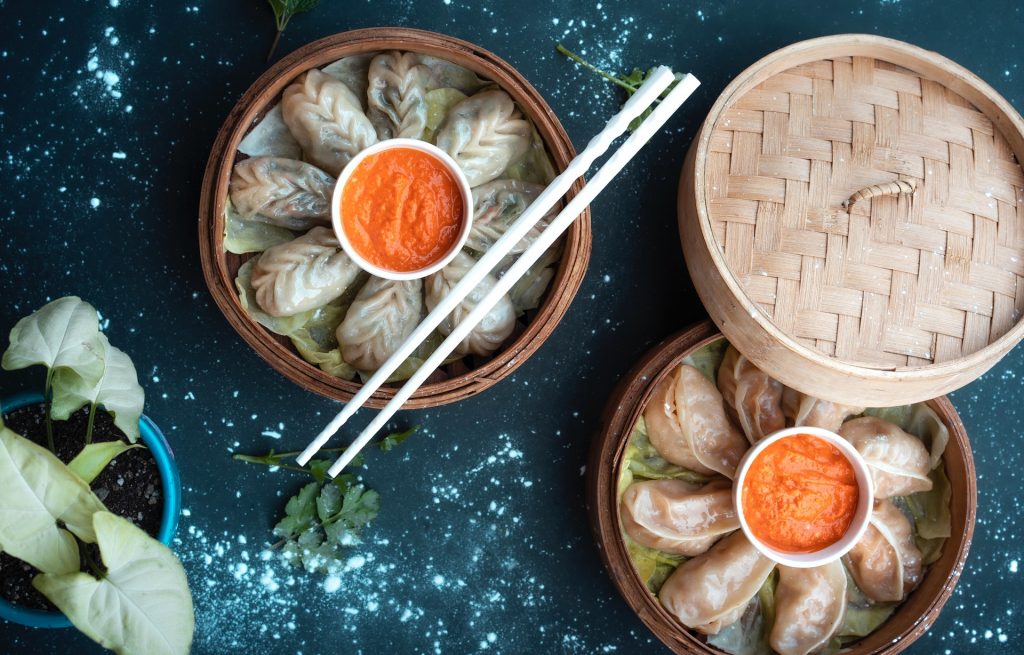
From century-old haunts like Hang Ah Dim Sum Tea House, the country’s first-ever dim sum eatery, to lively new eateries, there are plenty of places to indulge your belly in Chinatown. Some favorites include the Hing Lung Company, which specializes in Cantonese barbecue (just look for its roast ducks hanging in the window), and the tiny Wong Lee Bakery, where you can load up on egg tarts, green onion buns, and pan-fried shrimp dumplings.
For noodles served up in an authentic Chinese restaurant atmosphere, head to Chong Qing Xiao Mian, or try Good Mong Kok Bakery for homemade dim sum like chicken shui mai, and baos filled with egg yolk, sesame, and steamed barbecue pork.
Opened in 2017, China Live is a modern food emporium with indoor and outdoor dining and multiple venues dishing out everything from Chinese chicken and noodle salads to house famous kung pao “Firecracker” prawns. There’s also a craft cocktail bar and a marketplace stocked with spices, teas, and condiments like ginger-infused vinegar and house hot mustard.
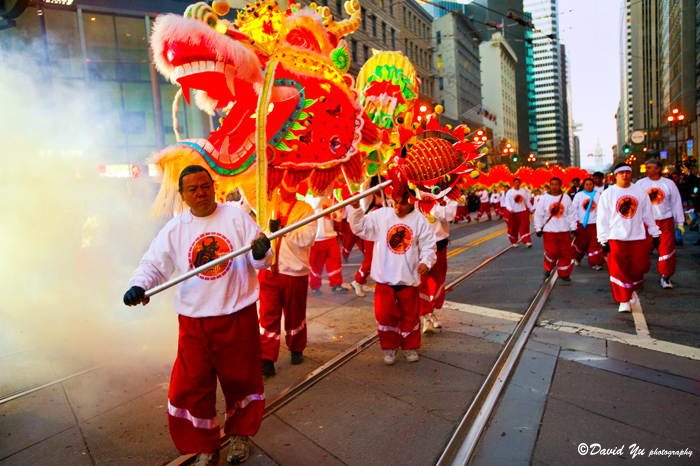
Whether it’s the annual Autumn Moon Festival or the two-week Chinese New Year Festival, which includes a Miss Chinatown pageant and flower market fair, and culminates with a huge parade sporting lanterns, drums, and firecrackers to scare away the evil spirits, held each February, San Francisco’s Chinatown is known for its elaborate events. A visit here is always a highlight.
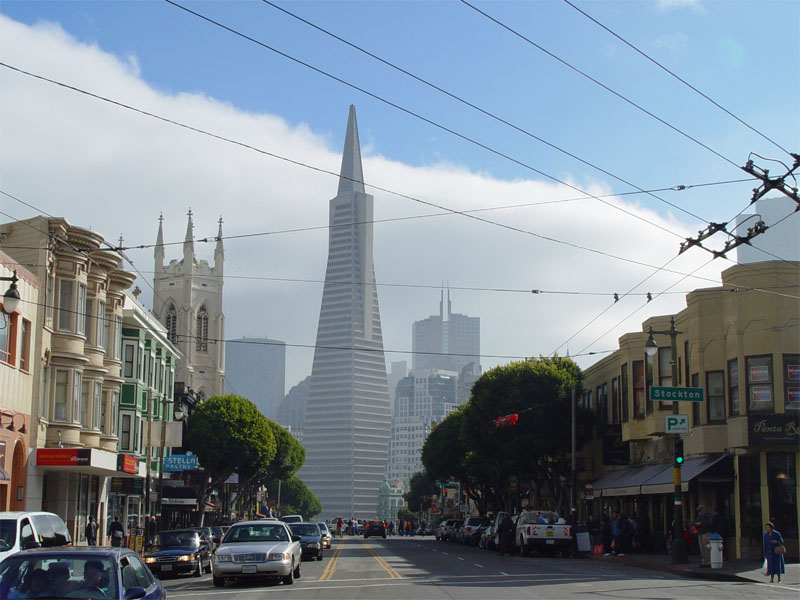
Sandwiched between Nob Hill to the west and North Beach to the northeast, San Francisco’s Chinatown is perfectly positioned for a full-day of exploring. The former is home to Grace Cathedral, an Episcopal church that is not only architecturally stunning, but also hosts events ranging from sound baths to yoga on the cathedral’s labyrinth throughout the year.
North Beach centers along Columbus Avenue. After filling yourself with dim sum, spend some time downtown browsing the shelves at City Lights, an independent bookstore and publishing house founded by poet Lawrence Ferlinghetti in 1953. Ferlinghetti published many of the poets of the Beat Generation, including Allen Ginsberg and Jack Kerouac. You can learn more about them at The Beat Museum on North Beach’s Broadway Avenue.
Chinatown is just north of Union Square, San Francisco’s well-known shopping district. The latter is easily accessible via Bay Area Rapid Transit from SFO and the city’s Mission District (check out my guide on where to eat here) as well as a bevy of MUNI buses and trains, including the N/L/K/M and J. To reach Chinatown, just walk north along Stockton Street through Union Square, then turn east one block on Bush Street and you’ll be at the Dragon Gate.
You can also take the Number 8 bus from the city’s Financial District toward Fishermen’s Wharf. Or from the Embarcadero Ferry Building, take the Number 1 bus toward Geary and 33rd from Clay and Drumm streets.
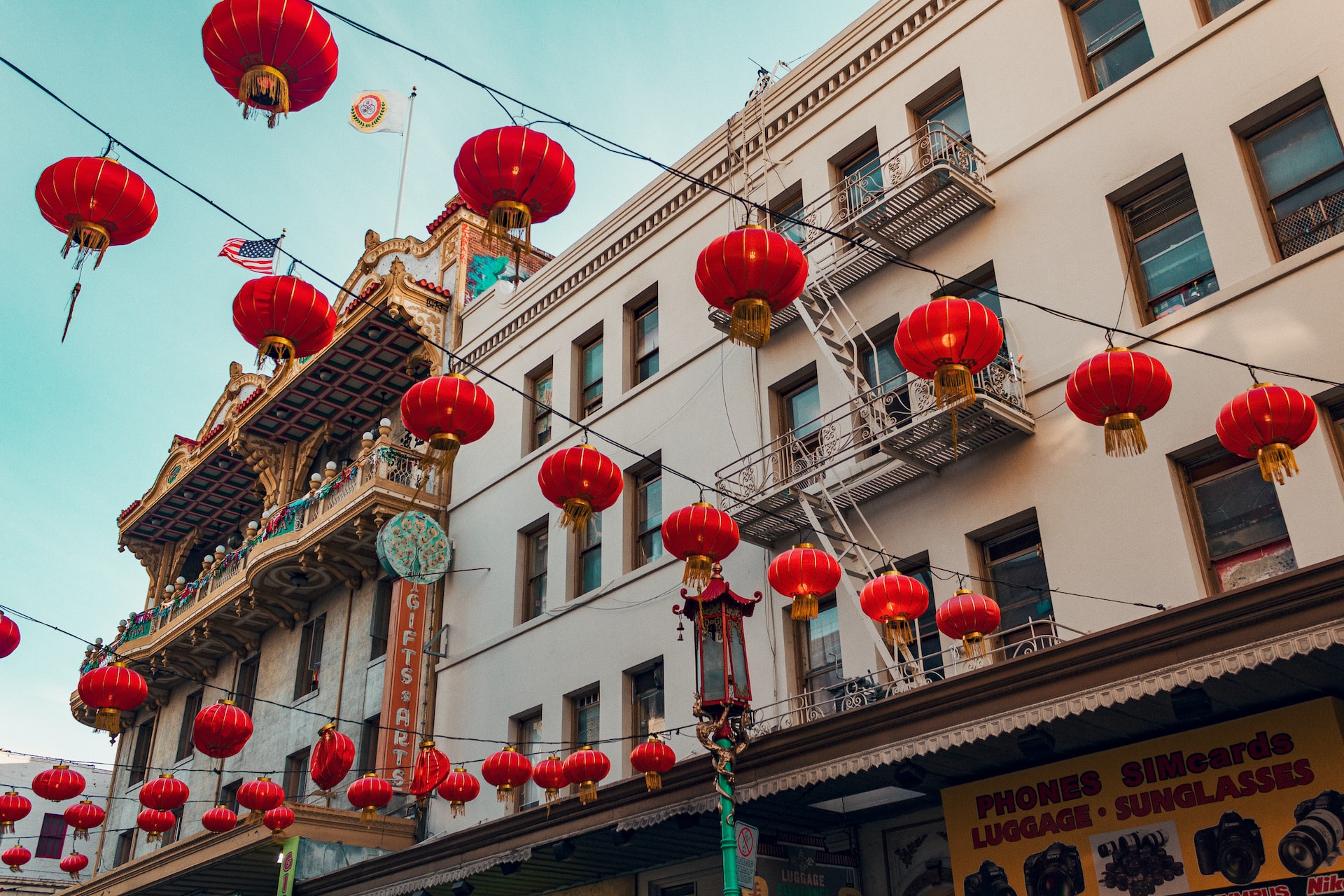
While there are other Chinese enclaves in SF, including one in the Richmond District and a couple in the city’s Sunset neighborhood, Chinatown remains San Francisco’s largest. This unique neighborhood also tells a story of reinvention and perseverance that’s very much in tune with the city’s larger history and, more importantly, a huge part of it.
Whether you’re simply craving dim sum or want to wander its quiet alleyways, Chinatown is a quintessential San Francisco experience that should be a must on every traveler’s list. Want to discover more cool neighborhoods in SF? Read all about everything to do in the Mission District, from burritos to street art.
 7 Things To Do When Visiting the Castro, San Francisco
7 Things To Do When Visiting the Castro, San Francisco
Among the many neighborhoods in San Francisco, the Castro is one of the most famous. You’ll find it in Eureka Valley, overlooked by…
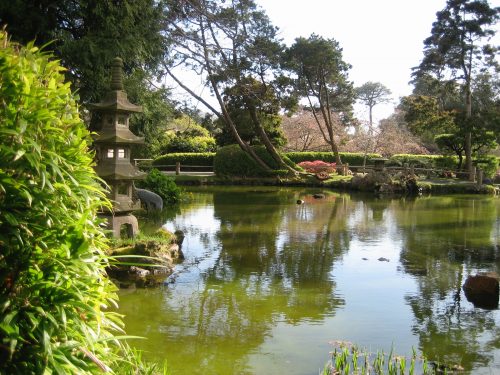 Everything To See In Golden Gate Park (And How To Do It All)
Everything To See In Golden Gate Park (And How To Do It All)
As a guide, when people are visiting San Francisco, I insist they carve out a whole day if possible to visit Golden Gate…
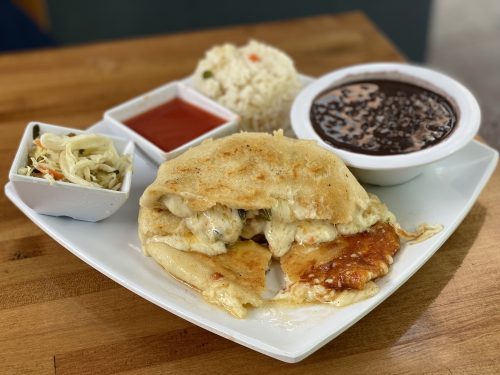 Where To Eat in SF’s Mission District, According to a Local
Where To Eat in SF’s Mission District, According to a Local
When it comes to incredible food, vibrant culture, and disproportionately sunny days, there’s nothing quite like San Francisco’s Mission District, a palm tree-lined…